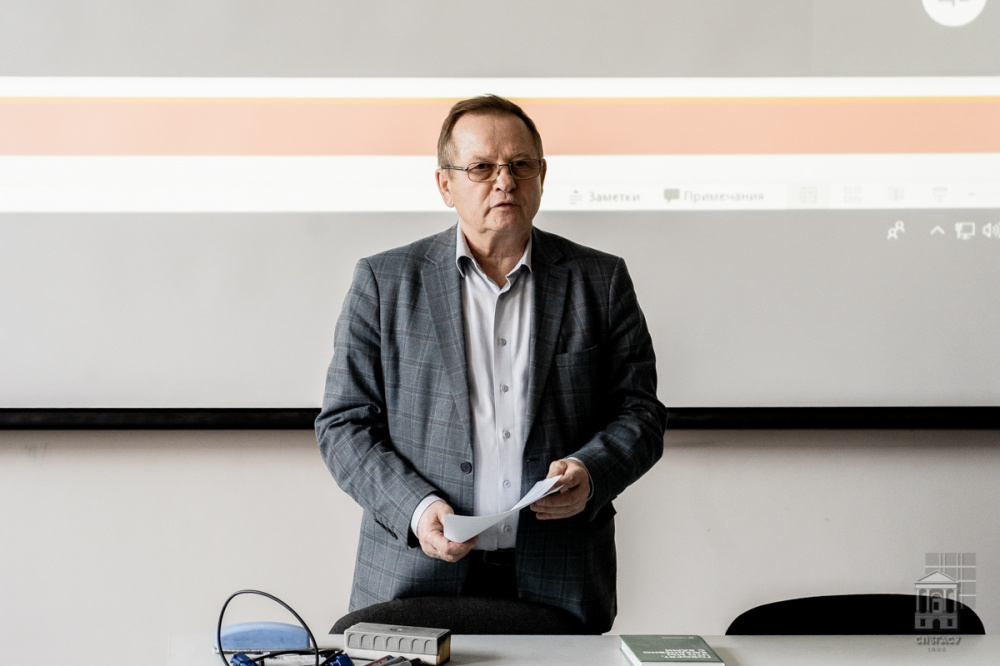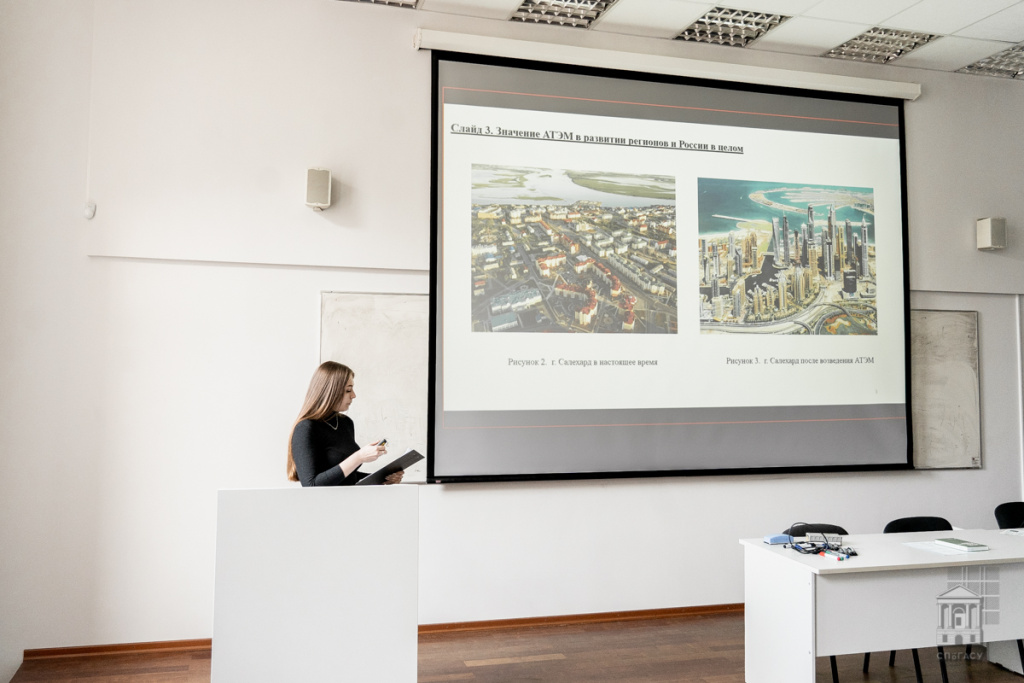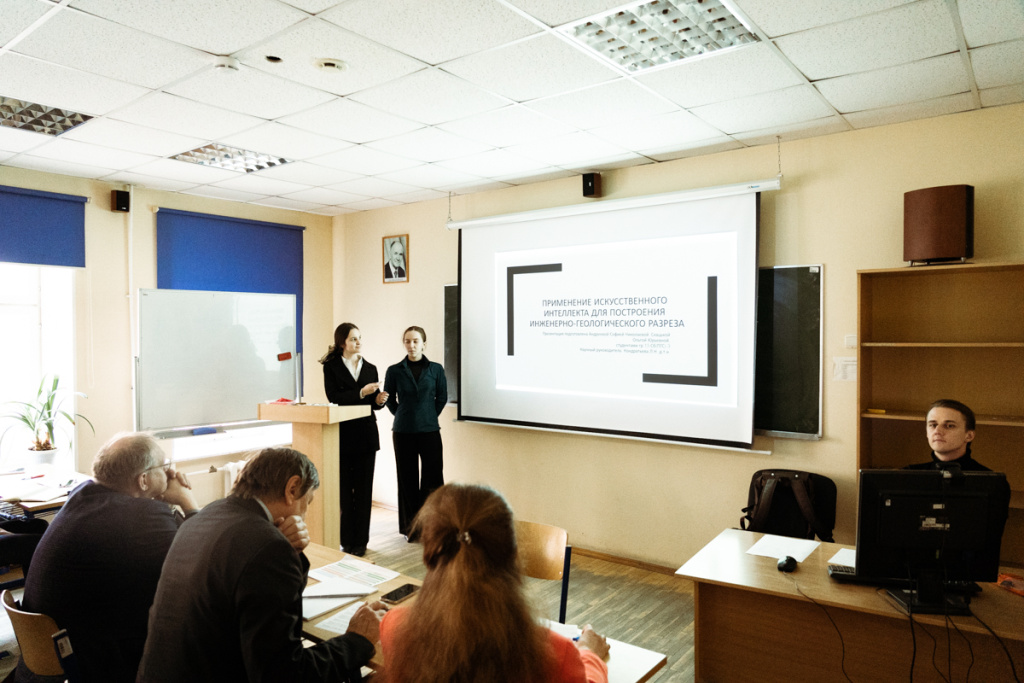 Aleksandr Chernykh, head of the Department of Metal and Timber Constructions, opens the thematic session
Aleksandr Chernykh, head of the Department of Metal and Timber Constructions, opens the thematic session
More than two hundred applications from specialized universities in seven regions of the Russian Federation were received to participate in the II National (All-Russian) scientific and technical conference “Prospects for modern construction”. The conference was held by the SPbGASU Faculty of Civil Engineering on 4–6 March.
As Anton Gaido, dean of the Faculty of Civil Engineering, said, among the speakers were heads of industry companies and leading scientists from specialized universities in the country. But the organizers placed the main emphasis on involving students in science and providing young scientists and master's students with the opportunity to test the results of their research.
The conference participants exchanged theoretical knowledge and practical experience on current issues of research and innovation. The work was organized in nine thematic areas: roads, bridges and tunnels; architectural and building structures; geotechnics; reinforced concrete and masonry constructions; metal and timber constructions; organization of construction; structural mechanics; building materials technologies and metrology; construction technologies.
 Evelina Davidyuk
Evelina Davidyuk
At the meeting of the thematic section of metal and timber constructions, Evelina Davidyuk, a second-year master’s student, spoke with a report “Designs of a high-speed transport and energy highway for Arctic conditions.” The highway starts in Ust-Luga, connects with the high-speed highway laid around St Petersburg, passes through Arkhangelsk, Naryan-Mar, Novy Urengoy, Tiksi, Pevek and comes to the Bering Strait. There is also an option to build an Arctic highway to Alaska. The student is confident that the implementation of the proposed project will lead to the development of coastal, power and emergency infrastructure by ensuring transport accessibility to remote areas.
According to Evelina Davidyuk, the main direction in the design of Arctic transport and energy highways (ATEH) is the creation of load-bearing building structures. Based on the results of the calculations, the author of the report proposed the most suitable, in her opinion, constructive solution. All structures will be assembled at factories within megacities and delivered to the construction site using water transport: “The peculiarity of the highway is that metal structures begin from a depth of about 20 meters underground! They are bored piles with a casing metal pipe, driven using open continuous auger drilling technology. Further, rising above the surface of the earth, the piles come into a metal beam grillage, where they are connected to the columns using a flange connection.”
 Sofia Andreeva and Olga Skatskaya
Sofia Andreeva and Olga Skatskaya
Third-year bachelor's students Sofia Andreeva and Olga Skatskaya reported on the use of artificial intelligence to construct an engineering geological section at a meeting of the geotechnical section. The speakers determined what benefits AI can bring in geotechnical engineering: with its help, you can create a simplified digital model of the terrain, suitable for integration into the TIM environment; speed up examination; automate the process, in case of any changes in the results of laboratory tests, rebuild the model by changing several phrases/variables; receive information about the groundwater regime in the long term, etc.
The authors of the study wondered whether artificial intelligence is needed to create an engineering geological section. The arguments FOR were the acceleration of the process of creating documentation (automation), the accuracy of construction, and the optimization of processing laboratory research data. The arguments AGAINST were the high cost, the inability of AI to solve non-standard problems, the need for software systems capable of interacting with it, the need to have specialists to create and train it.
Sofia Andreeva and Olga Skatskaya came to the conclusion that using artificial intelligence to create an engineering geological section is possible, but it is associated with some difficulties, which can be overcome through the joint work of a geotechnical engineer and a programmer. There is a need to create your own AI; without training, integrating AI into the design process is impossible.
At the meeting of the section of structural mechanics, third-year PhD student Sergey Tetushkin presented the results of model tests of a structure layout for seismic impacts. The purpose of the tests was to determine the natural frequencies of the structure in order to prove the need to consider the calculation-dynamic model of tower buildings with a buried pile foundation, taking into account the displacement of the embedment into the ground. The PhD student also proposed introducing a new coefficient for calculating the first mode of natural vibrations of tower structures with a recessed part.
Boris Kondakov, a fourth-year PhD student, studies the dynamic parameters and influence of the tsunami on coastal hydraulic structures. The PhD student models tsunami waves using a modern finite element software package that allows him to combine the problem of hydrodynamics and structural mechanics. In this case, the study requires determining the influence of various factors on the magnitude of the tsunami load, for example, such as surface slope and coastline roughness.
Issues of introducing innovative design methods using modern technologies and new structural materials in all sectors of the construction industry were discussed at meetings of the sections of construction technology and architectural and building structures. In addition to the prospects of modern construction using CLT panels and other methods of using laminated wood, unique architectural solutions based on the use of structures made of pipe concrete were discussed (report by Irina Soboleva, third-year bachelor's student).
New building materials and structures are of particular relevance in the renovation of historical architectural industrial heritage and aging housing stock (reports by Anastasia Arefieva, a third-year bachelor's student at our university, and Maria Shevchenko, a student at Kursk State University).
On the second day of the construction technology section, employees of the Autonomous Non-Profit Organization for the Development of Science, Education and Expert Activities “Institute of Forensic Expertise” Oleg Simakov, Nikita Korolev and Pavel Shunatov, shared their experience in using prefabricated monolithic floors during major repairs of buildings and structures in the Kalininsky district of St Petersburg
The results of the conference are planned to be published in a collection of materials from speakers in thematic areas with subsequent indexing in the RSCI and placement in the scientific electronic library elibrary.ru.